Welcome to the many coloured hues of Northeast India’s fiestas
Northeast India proudly flaunts its rich and colourful festivals, most of which are related to agriculture or the beginning of a New Year. The festivals of the states of northeast India are commemorated for days with various folk dances and music and present a wonderful opportunity for people belonging to different tribes to bond.
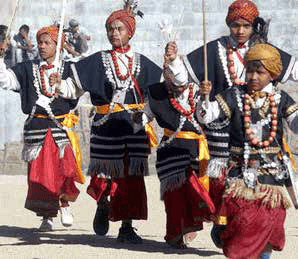
The sumptuous delicacies, alluring costumes, soulful music, warm hospitality and lively ambience give one enough reason to be an active part of the festivities and plan a Northeast India trip.
Nongkrem Dance Festival
Shad Nongkrem is a sacred dance of Meghalaya, usually celebrated sometime during the month of November at the village of Smit. This is a magnificent fiesta that is celebrated with tremendous pomp and grandeur. Shad Nongkrem, being the most important festival of the Khasi people, is performed by the Syiem of Khyrem, who sacrifices a cock to appease the gods of the ruling clan and the deity of Shillong peak (U-Lei Shillong). Sacrifices are made as offerings to their ancestors and because of this, this festival is also known as Ka Pomblang.
Unmarried girls and boys dressed in their beautiful, traditional attires perform this dance. Girls perform Ka Shad Kynthei in the inner circle of the arena. Boys with their swords in their right hand and white yak hair in their left, perform the Ka Shad Mastieh in the outer circle.
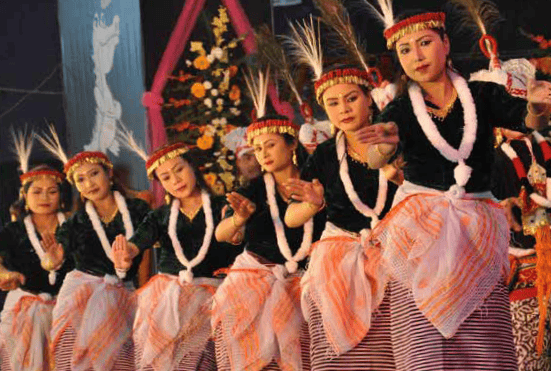
The ever-changing beats of the drums and pipes (Tangmuri) take the fervour of this festivity to the next level. On the whole Nongkram Dance is one of the most superb carnivals that manifests itself with a colourful hue and brings in more shades to the entire state in this zealous celebration.
Dree Festival
The Apatani, the main tribe living in Ziro, perform a series of rituals and festivals celebrating different phases of agriculture for an abundant yield of crops. Chandii Tamu is a rite performed during the sowing period, Dree during every growing period of crops and Yapung, just before the harvest. Dree has become one of the major festivals for Apatanis and a wonderful reason to travel to northeast India.
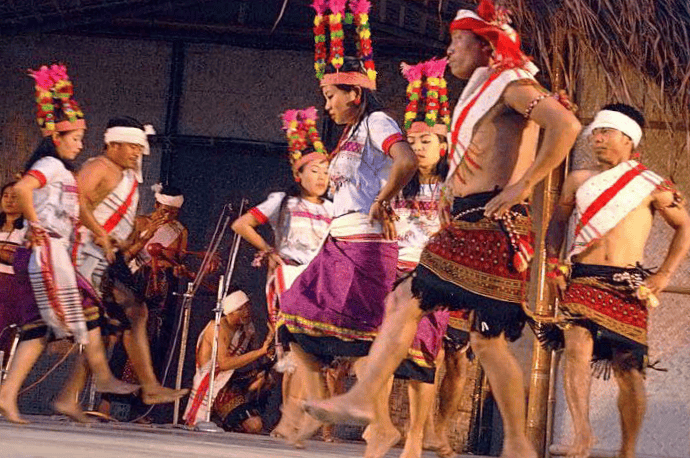
Dree, is primarily a harvest festival, celebrated to ensure a good harvest. During this festival, people offer prayers to four gods namely, Tamu, Harniang, Metii, and Danyi. The 3-day celebration and festivities start with dance performances by children, young and old, traditional wrestling performances and food stalls at the venue.
After all the rituals and sacrifices, the throes of the celebration moved to the next level with the tribe’s most popular folk dance Daminda, a welcoming dance that marks the beginning and end of the Dree festival. This dance performed to the strains of Daminda Biisi, is a ballad recounting the origin of the festival, welcoming the guests to participate, persuading the god of agriculture for a plentiful harvest and prosperity for the whole of mankind.
As the sun sets, the evening turns brighter and more colourful with the ‘Miss Apatani Beauty Contest,’ an event to showcase the beauty of their culture and how it blends with today’s modern world and is now a major boost for northeast India tourism.
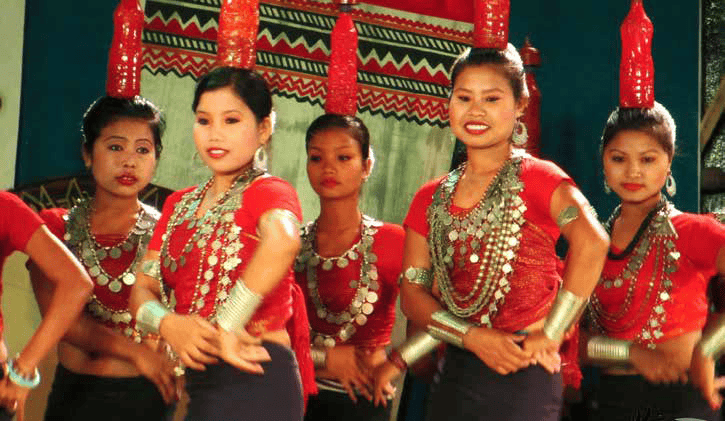
Bihu
Bihu is a harvest festival that has come to be known as the national festival of Assam, a state well-reputed for its tea gardens, mighty Brahmaputra River and lush green forests. The Bihu festival is a set of three different cultural festivals of the state, Rangali or Bohag Bihu, Kangali or Kati Bihu, and Bhogali or Magh Bihu.
Bohag Bihu being one of the most prominent festivals in Assam coincides with Baisakhi, which falls around April. On the first day, devotees bathe and thank the animals for helping them in the farm work, while praying to the gods for a productive year ahead.
On the second day, known as Manuah (human) Bihu, people dress up in new clothes, exchange gifts and visit their relatives and seek blessings from their elders. On the third and final day, known as, Gosai (God) Bihu, people worship their household gods, seeking their blessing for a fruitful and abundant year ahead. Husori, a band of male singers, visit each and every household and sing traditional Bihu songs while offering their blessings to the household in return for some alms and gifts.
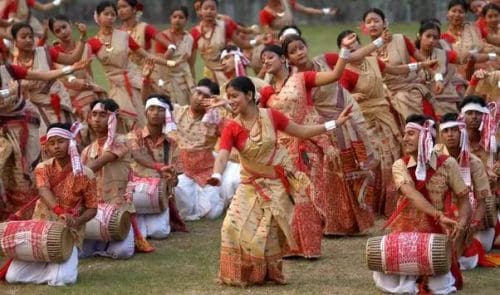
Cheiraoba
Also known as the Spring Festival is the New Year of the Manipuri people, celebrated on the first day of the month of Sajibu (March- April). People dress up in their traditional attire, decorated their houses, prepare delicacies and then offer them to their deity Sanamahi. Then they visit their relatives to exchange gifts and wishes and blessings for the New Year.
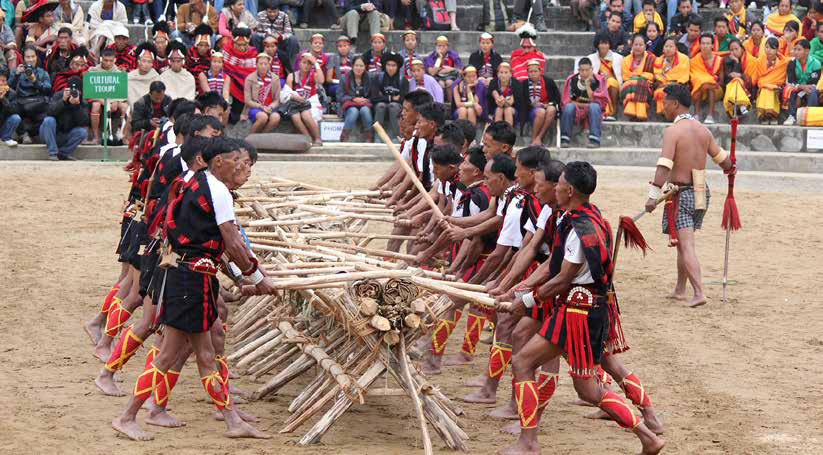
One of the important aspects of this particular festival of northeast India is the selection of Chahitaba, a man selected by the Maibas (priests) based on the former horoscope. The chosen Chahitaba is meant to give up his name for a year and bear all the sins of the people. He is responsible for the good or ill of the whole community. Another important ritual associated with the festival is the climb to the Cheiraoching hilltop, located in Imphal, which ignites the belief in them that most anyone could scale great heights in life.
Kuts of Mizoram
In local Mizo vernacular, ‘kut’ means festival. Mizoram in northeast India has three festivals, Chapchar Kut, Mim Kut and Pawl Kut, all connected to agricultural activities. Chapchar Kut is celebrated in the month of March, marking the arrival of spring.
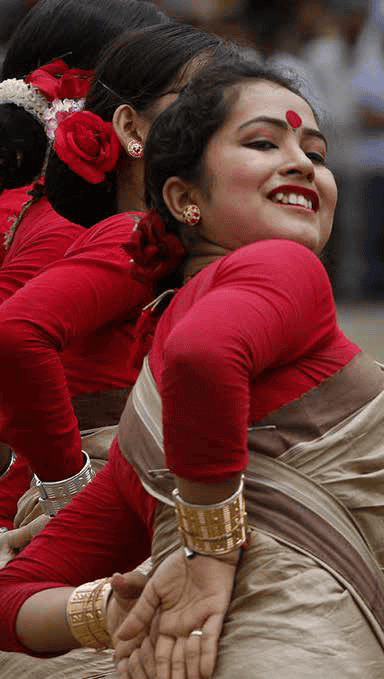
This is one of the oldest festivals of Mizoram, considered to be the most important traditional festival, celebrated with great pomp and splendour. People gather together, dressed in colourful traditional clothes and hats made from beads and parrots’ feathers. A traditional bamboo dance is performed by the women while the men sit on the ground and beat the bamboo against each other. Over the years each village has developed its own brand of celebration according to time, idiom and ethos.
Garia Puja
The most admired carnival among Tripura’s Kokborok-speaking tribal folks is celebrated with various traditional rituals along with a dance concert at the end. The Garia Puja is celebrated with great pump and glory on the last day of the month of Chaitra (April).
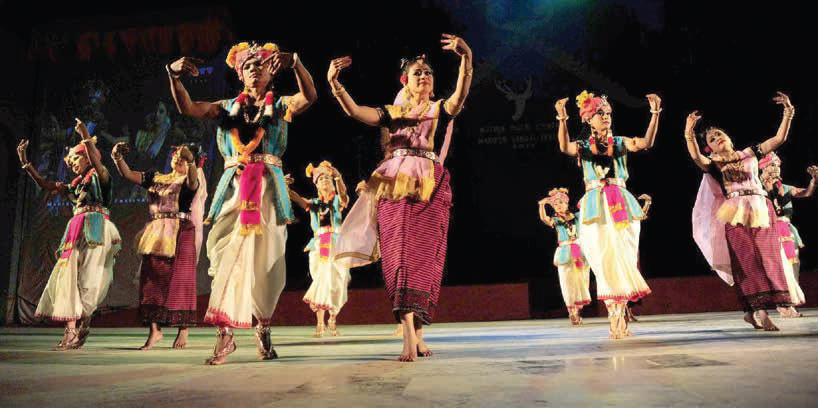
Garia is the compassionate deity of every household. People worship Garia and celebrate this puja with dedication and efficiency in order to keep their house in order and ensure peace and serenity. The symbol of the deity is carried from house to house by the people while singing and dancing to the rhythmic sound of the drums. The songs are sung to appease the gods, relieve one from suffering and increase the production of crops.
Hornbill Festival
This northeast India festival is one of the biggest celebrations of the indigenous warrior tribes of Nagaland. Named after the most venerated bird species in the state, this festival revolves around agriculture, which is considered sacred.
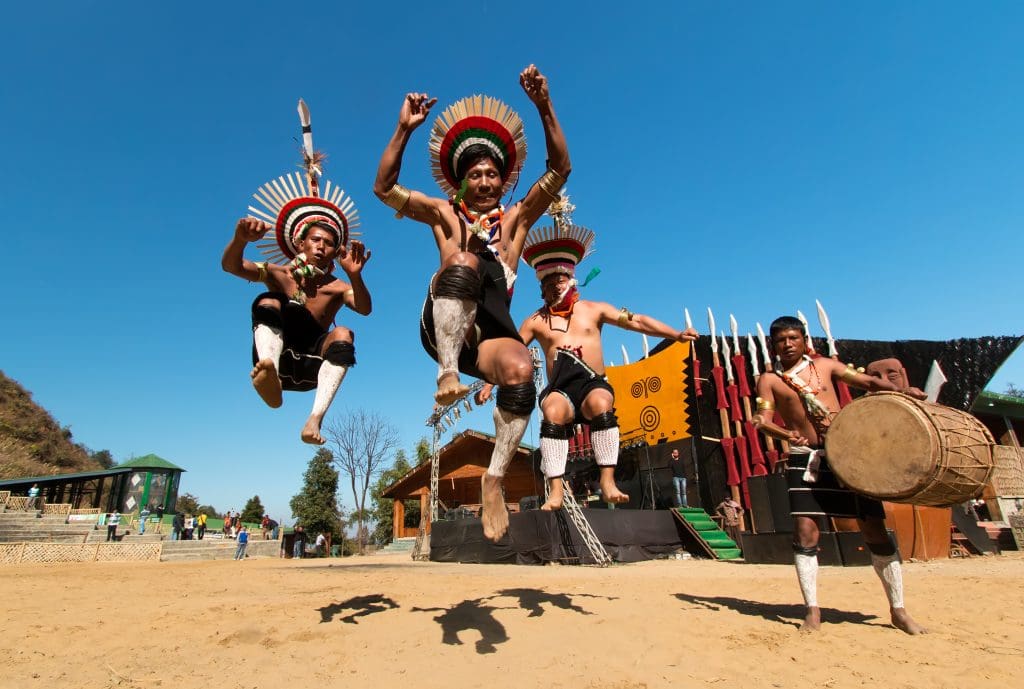
In spite of modern influence, the people have preserved their cultural heritage along with their customs and legacy while keeping the torch of their tribal identity well-lit. This festival encourages inter-tribal harmony and promotes local culture and traditions while displaying their unique customs, rituals and practices. Tourists are warmly welcomed and are treated well.
The celebrations are attended by all the major tribes of Nagaland who represent themselves with various arts, folk songs, dances and games. There are numerous displays of handicrafts, handloom, and multi-cuisine local food stalls while a rich amount of rice beer is always at hand to indulge in.
Evenings are lit by the thrilling Hornbill National Rock Concert in which bands from all over the country and abroad participate to compete. This is followed by the amazing Night Market in the town. But, the most attractive event at the festival is the Naga chilly eating competition and pork eating festival which draws a lot of crowd and evokes much fanfare and excitement.
Read more: Latest



